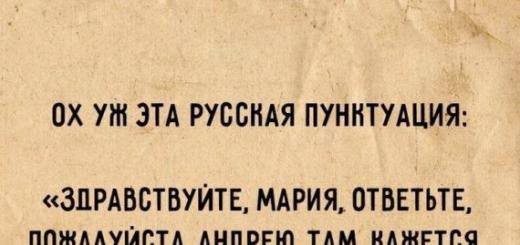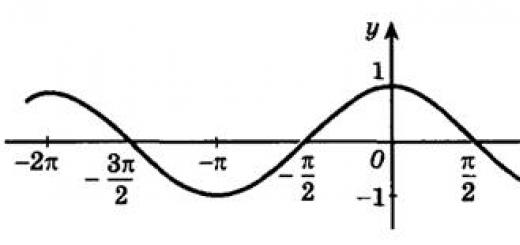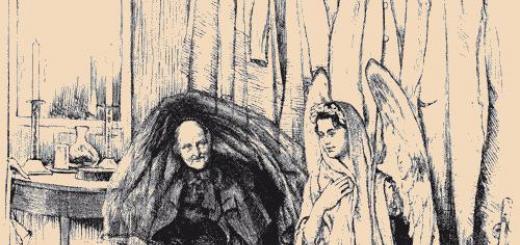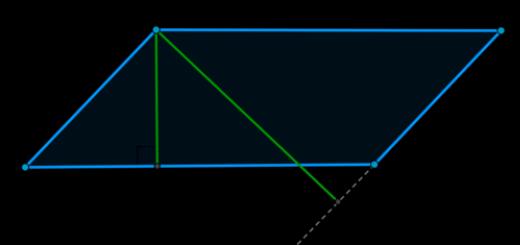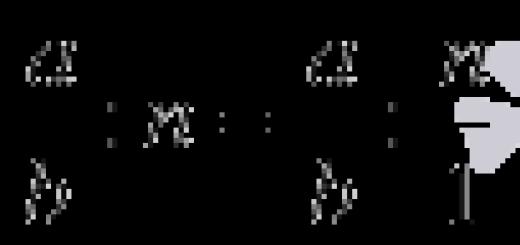MBOU DOD CDT "Phoenix"
Association "Club of a young family".
Additional educational program "Seven+I".
The program for the development of speech and acquaintance with the fiction of preschool children "Gramoteika".
Occupation p about the subject "ABVGDeika" (second year of study)
"Letter X". The sounds "x-x" are consonants.
Goals:
- To consolidate knowledge of vowels and consonants, hard and soft consonants.
- To consolidate the ability to differentiate the concepts of "sound" - "letter".
- To consolidate the ability of intonational selection of sounds in words and phrasal speech, determining the location of sounds in a word.
- Introduce the new letter "X".
- Practice syllable skills.
Equipment and materials used in class.
- Demonstration material: circles of red, green and blue colors; a picture of a tram; picture from the series "ABC".
- Magnetic board, magnets, chalk.
- Didactic material: Kolesnikova E.V. “Workbook for children 5-6 years old “From A to Z”, Kolesnikova E.V. "Educational - methodological manual" The development of sound-letter analysis in children 5-6 years old ".
- Pencils and colored pencils, erasers.
Methods and techniques.
I. Methods of organization and implementation of activities.
- Aspect of perception and transmission of information:
- verbal: conversation, story
- visual: demonstration, illustration
- practical: exercises
- Aspect of thinking:
- reproductive (reproduction): actions according to the model.
- Control aspect:
- work under the guidance of a teacher
- independent work: creative work
II. Methods of stimulation and motivation of activity
- interest in learning: creative tasks, riddles,
- duty and responsibility: uniform requirements and control over their implementation, encouragement and censure, explanation of the social and personal significance of knowledge, skills and abilities.
III. Methods of control and self-control
- oral: frontal and individual survey, observation of the guys
- practical: skill test
IV. Methods of versatile influence on consciousness, feelings and will
- personal example method
- beliefs: coaching
V. Methods for regulating and stimulating behavior and activities
- Learn to listen carefully to the story and answer the questions correctly.
- Learn to listen carefully to sentences and say the last word that is appropriate in meaning.
- encouragement, remark, punishment, creation of a situation of success and trust, support for positive manifestations.
Course progress.
1. Organizational moment.
Teacher: Hello guys!Today in the lesson we will again talk about sounds, remember how vowel sounds differ from consonants, a sound from a letter, and also get acquainted with a new letter, find out what sounds are hidden in this letter and be sure to work in the notebook "From A to Z".
II. Main part.
Differentiation of vowels and consonants, hard and soft consonants.
Teacher: Guys! You and I know that everything that surrounds us, everything can sound!
Every day we can hear different sounds with you! For example, how a dog growls: rrr .. or how a baby cries in a stroller: ah-ah-ah ...Sounds are vowels and consonants. Which sounds do we call vowels and which consonants?(children's answers)
Teacher: Right we can sing and pull vowel sounds, and no obstacle interferes with them, but we cannot sing and pull consonants, because some kind of obstacle (teeth, lips, tongue) always interferes with them. Consonants can be as hard as a stone or as soft as a feather.
And now, I suggest you play the game "Guess the Sound". I will name each of you a sound, and you will try to determine what kind of sound it is - a vowel or a consonant, hard or soft.
front poll.
The teacher achieves the student's full response (for example: "solid consonant sound").
Teacher: Well done guys, you did a great job! Guys, can we see the sounds?(children's answers)
teacher : That's right, we only hear and pronounce sounds, but we can designate them. How do we designate vowels, consonants?(children's answers)
The teacher hangs out “sound players” on the board.
teacher : Correctly! We denote vowels with a red circle, hard consonants with a blue circle, but soft consonants with a green circle. And now it's time to play the game "Signals". I will give each of you mugs of red, green and blue. If I name a vowel, you raise a red circle, if a hard consonant is blue, a soft consonant is green.
The teacher asks the children to justify their choice.
Teacher: Well done! And now we will rest a little.
Fizkultminutka.
We are funny guys(steps in place)
We guys are acrobats!(steps in place)
One jump, two - clap(jump, clap)
We can jump the whole lesson! (jumping in place)
Differentiation of the concepts "sound" - "letter".
Teacher: Okay guys! Take a seat on your chairs. We continue the lesson.
Which of you will tell me: in addition to the sounds of vowels and consonants, what else surrounds you and me?
Children: Letters!
Teacher: Correctly! And who remembers how the letter differs from the sound? ( children's answers)
That's right, we only pronounce and hear the sound, but we write and see the letter.
front poll.
The teacher, interrogating the students in turn, then calls the sound, then writes a letter on the board. The task of the child is to give an answer, explaining his choice. The child who gets the letter says what it is called, how many sounds “live” in it (one or two), pronounces them, tells, a vowel sound or a consonant. Then he goes to the blackboard, marking these sounds with circles of a certain color (vowel - red, hard consonant - blue, soft consonant - green).
Next comes a survey of those children who got the sound, and they did not manage to go to the blackboard. The teacher calls the child and asks, naming a letter or sound, to indicate them on the board. Moreover, when a sound is pronounced, the child points to the circle under the letter in which he “hides”.
Syllabification. Graphic modeling of the word (rectangle).
Teacher: Great! Guys, you told me that we do not see the sounds, but they are friends with each other and add up to different words. Guys, answer my question: “Is the hedgehog a sound or a word?”(children's answers)
Teacher: That's right, that's the word. And I also know the cold word "so-sul-ka", the wet word "rain". What words do you know? ( children's answers)
Teacher: We have named various words with you that sound different and are not similar to each other.
(The teacher slaps the words "so-sul-ka" and "rain")
Teacher: Words can be long or short. Which words are long and which are short? ( children's answers)
Teacher: And now we will define long and short words.
(The teacher gives the children a form for syllable separation, the children are in their places, one child at the blackboard - slams the word, determines the number of syllables in the word - divides the rectangle shown into as many parts as there are syllables in the word).
teacher : Great job!
The teacher thanks the children for the first half of the lesson, builds them into a train and escorts them to a break, where their parents are waiting for them.
Turn.
Introduction to the letter "X".
teacher : And now I want to tell you a story about a braggart hamster. Listen carefully!
There lived a hamster. Every evening, many hamsters gathered on the hill to listen to his amazing stories. “Believe it or not,” the hamster began, “and once I dug a passage through the whole Earth and got out in Africa. And it's so cold there - worse than ours! As soon as I got out, I look - an elephant is standing, twisting its trunk and grunting. I tell him: - What grunted? Khomyakov did not see, or what? And he: - Oink-oink, oink-oink! I got angry, grabbed him by the trunk, spun him well and threw him to the very top of the tree. - Wow! the hamsters exclaimed. - I'm going further, - continues the hamster - snow underfoot - crunch, crunch. I look - two large snakes are lying, sleeping and snoring all over Africa! I quietly crept up and tied their tails in a knot! And then…I….- What, what then? the hamsters asked in unison. - I ... then ... - Yes, do not pull the same you! the hamsters pleaded. -Good job! - offended the braggart hamster. Do you think it's so easy to invent something you've never seen before? Here is such a story! Have you listened carefully to the story, where did the hamsters gather to listen to the stories of the braggart hamster? ( children's answers)
teacher : Who did the hamster meet in Africa? ( elephant)
teacher : What did the elephant do?(Grunt)
teacher : Is it true or not?(Not )
teacher : Who else did the hamster meet? ( Serpent)
teacher : What did the snakes do?(Snored all over Africa)
teacher : Is this true or not?(Not)
teacher : Great, you are very attentive! Now answer this question: “What is the same sound you hear at the beginning of the words “hamster”, “braggart”, “snoring”, “grunting”? ( children's answers)
teacher : Correctly! And who will tell you about this sound, what is it: a vowel or a consonant, a consonant hard or soft? ( children's answers)
teacher : And who will name the younger brother of the sound "X" and tell about him? ( children's answers)
teacher : The sounds "X" and "XH" can we see? ( children's answers)
teacher : The sounds "X" and "Xh" are hidden in the letter "Ha".
The teacher posts the image of the letter "Ha" on the board.
teacher : Ha, it looks like scissors,
But at work, not lying down.
What else does the letter "Ha" look like? ( children's answers)
teacher : And now let's build the letter "Ha" with pencils? How many pencils do you think we need? ( children's answers)
teacher : And what other letters can the letter "Ha" turn into?(T,L,G)
teacher : And now let's see in what words the letter "Ha" is hidden?(Children name objects from the picture to the letter "Ha" and determine the place of the sound in the word: at the beginning, in the middle, at the end of the word)
teacher : Time to relax!
Fizkultminutka.
Hamster, hamster, hamster,
Strip barrel.
Hamster gets up early
Washes cheeks, rubs neck.
Homka sweeps the hut
And goes to charge.
One, two, three, four, five!
Homka wants to become strong!
Work in a notebook. Tasks for fixing the letter "X".
Teacher: Guys, and now we have to work in the notebook "From A to Z".
(The teacher tells the children which page to open the notebook on, writing the number on the board.)
Teacher: Please put your finger on the number "one" in the red box.
(The teacher passes and sees if the students have found this number correctly.)
Teacher: Okay, fingers can be removed. Under the number one in the red square, the artist painted a beautiful picture for us and even prepared interesting riddles, by guessing which we can find out if there is a familiar sound “X” or “Xh”.
teacher : Listen to the first riddle:
On the icy platform cry,
A student rushes to the gate.
Everyone shouts: "Puck! Stick! Hit!"
Fun game...
Kids: Hockey!
Teacher: Right!
X hockey. Is there a familiar sound?
Children: Yes!
Teacher: What does it sound like?
Children: "X"!
Teacher: Where is it?
Children: At the beginning of a word.
teacher : Is it a vowel or a consonant?
Children: Agreed!
teacher : Hard or soft?
Children: Solid!
Teacher: And is it soft?
teacher : Listen to the second riddle riddle:
Pull if the rope
Shoot loudly like a rifle
And to the top with a bright fountain,
For guests and gifts
Confetti will rush
In a way we don't know.
This holiday girlfriend
It's called ..... (CLAPTER).
Children: Flapper!
Teacher: Right!
X-flapper. Is there a familiar sound?
Children: Yes!
Teacher: What does it sound like?
Children: "X"!
Teacher: Where is it?
Children: At the beginning of a word.
teacher : Is it a vowel or a consonant?
Children: Agreed!
teacher : Hard or soft?
Children: Solid!
Teacher: And is it soft?
Physical education (finger gymnastics).
This finger wants to sleep
This finger - jump into bed,
This finger curled up
This finger is already asleep.
Hush, finger, do not make noise,
Don't wake up the brothers!
(The same gymnastics is performed on the second palm.)
Fingers up! Hooray!
It's time for us to go to Parus!
Teacher: Now put your finger on the number two in the red box, please.(The teacher makes sure that the instructions are followed correctly.)Well done! Remove your fingers. Under the number two in the red square, the artist depicted a five-story building for us. The letter "Ha" lives in this house. Let's circle this letter with a simple pencil on the roof of this house point by point. We take a simple pencil, circle the letter “Ha” by dots and remember: how many sounds live in it, one or two. The vowels “a, o, u, s, e” come to the letter “Ha” and together they sing songs. Let's write the letter "Ha" before the vowels "a, o, u, s, e" and read the songs.(Children, with the help of a teacher, read the resulting syllables.)
Teacher: What does it sound like?
Similarly, work is carried out with the vowels "u, i, e, e"
Teacher: And now let's write the letter "X" in the empty squares and read the words. Where did she hide: at the beginning, in the middle, at the end of the word?
Workplace cleaning.
Self-control: children check the cleanliness of their workplace (table, chair, floor).
III. Lesson results.
The teacher together with the children summarizes the results of the lesson, gives a positive assessment of the activities of each child.
Teacher: Today we remembered how vowels differ from consonants, letters from sounds, studied the new letter “X”, we know what sounds are hidden in this letter, divided words into syllables, determined long and short words.
I hope you all enjoyed the tasks in the A to Z notebook, which you completed with ease. Thank you for your work. And our lesson, meanwhile, came to an end. Line up in the train. Goodbye!
(Saying goodbye to the teacher, the children leave the class by train.)
The lesson is built in accordance with the Federal State Educational Standard and the age characteristics of students. It awakens the feelings and reflections of younger students about the value attitude to bread through a variety of methodological forms, the inclusion of children in the game, exercises, reading.
The educational outline is aimed at actualizing creative thinking, justified by reasoning about the moral problem of respect for bread, respect for working people, and the traditions of the Russian people. The lesson brings up a civil position on the basis of the spiritual and cultural values of Russia.
Download:
Preview:
Literacy lesson on the topic "Sounds [x], [x"], letters X x.
The purpose of the teacher's activity:
create conditions for successful literacy education; based on the phonetic analysis of words, select the sounds [x], , and introduce the letters X, x; help develop reading skills.
Tasks:
1. Subject results:create situations that lead students to learn new letters; analyze the articulatory features of the sounds [x], , correlate the sound with the letters; be aware of the differences between paired-unpaired, hard - soft consonants, paired-unpaired deaf sounds. To be able to characterize the letter X as an unpaired deaf consonant, paired in hardness-softness.
2. Meta-subject results:
to continue the formation of positive motives for educational activities; to continue the formation of interest in new educational material, to teach to understand and save the educational task, to analyze objects with the selection of essential features; search for the necessary information in the ABC; continue to teach how to build a monologue statement; take into account different opinions, strive to coordinate positions in cooperation, use the rules of courtesy in communication.
3. Health saving:
Taking into account the age characteristics of students, creating a favorable psychological climate in the classroom and conditions for their self-expression, ensure the strengthening and development of both mental and physical health of children
Lesson equipment:in children "ABC" edited by Nechaeva N.V.; pens, colored pencils; from the teacher "ABC" edited by Nechaeva N.V.; projector, screen, computer.
1. Organizational moment.
slide 1.
Guys, why do you go to school? (children's answers)
Today in the lesson we will learn to think, analyze, we will learn to read and (pause) we will get acquainted with new sounds and letters. All the knowledge that we will get today, of course, will be useful to us in our further studies.
2. Repetition of what has been learned.
Slide 2.
What groups are the sounds of our language divided into?
What is the difference between vowels and consonants?
- What prevents consonants from “singing”?
What groups can consonants be divided into?
What is the difference between voiced and deaf?
What makes consonants soft?
- What are the letters that always denote soft consonants?
What are the letters that always stand for hard consonants?
- Name the "cunning" vowels. Why are they "smart"?
"Singer!"
Slide 3.
Let's remember the alphabet and sing the song "ABC".
3. Preparation for explaining new material
slide 4.
1) Breathing exercises
They straightened their back, put their hand on the abdominal press, inhaled through the nose and said in one breath:
A I U N
And now briefly and abruptly:
yyyy kkkk uuuu
4. Working with new material
On the desks of the children are square pieces of paper.
Slide 5.
- Follow the directions.
I'll give you a riddle.
Do it in order:
Once - we raise the leaves,
Two - we bend the leaves,
Three - turned again,
the fourth was unrolled.
The letter is hidden inside.
Who is smart? Name it!
What letter are we going to study?
What is the topic of the lesson?
slide 6.
Let's print this letter on the board.
Let's say the sound indicated by the letter x. What can you say about this sound? Prove it.
Slide 7.
Name the words.
How is this sound pronounced in these words? (firmly)
Think of words in which the same sound would be pronounced softly.
slide 8.
Open the "ABC" on p.91 and carefully examine the drawings. Name the words in which you can hear the sound [x], [x "]
The game "Third is superfluous."
Read the syllables.
Which syllable is extra?
Why? (hee, the sound is soft)
Reading columns of words.
Read the first column of words.
What common?
Work in pairs.
Work in pairs. What word is missing? Show the signal.
Read the second column of words. What common?
What part of the word contains the letter x?
Work in pairs. Divide the words into groups. Show the signal.
On what basis were the words divided into groups?
You've worked hard, so you deserve a break!
- Physical education with phonemic warm-up.
slide 9.
You must be tired
And now everyone stood up together.
Follow objects with your eyes.
Continued work.
slide 10.
Sly thin Ferret
Opened a stall in the city.
Even roar, Ferret, even cry -
Suddenly, a ball burst into the stall!
“Oh-ho-ho, oh-ha-ha! -
Distributed at the stall.
- What can be sold in the stall of the cunning thin Weasel? The illustration on p.91 will help you(Children's answers.)
Slide 11.
- What can be bread?(Fresh, fragrant, crunchy, warm, etc.).
slide 12.
Primary reading of the text about bread by the teacher and analysis.
What is the text about?
What is the affectionate name for bread?
slide 13.
Not one important event with the invitation of guests is complete without a fragrant loaf.
Many guests from different countries of the world came to our country, to the city of Sochi.
What important event is associated with their arrival?
How will the guests of honor of the Olympic Games be welcomed?
slide 14.
This is a tradition of the Russian people, because bread is an eternal symbol of life, health, work, prosperity and wealth.
Imagine how many people put in their work so that a loaf appears on the table!
Students reread the text.
What proverbs are found in the text? Find and read them.
slide 15.
“BREAD IS THE HEAD OF EVERYTHING!»
How do you understand this proverb?
Answers are being heard. (Without bread, food does not seem so tasty; if there is bread, it is already a holiday.)
« Who plowed, was not lazy, and bread was born from him.»
How do you understand this proverb?
(He doesn't fall from the sky,
It doesn't appear all of a sudden.
To grow an ear of bread
Dozens of hands needed.)
There are many more proverbs about bread among the people. Read them:
slide 16.
- There will be no bread, there will be no dinner
- Whoever is happy to work will be rich in bread
- Not tasty without salt, not satisfying without bread
- Work is bitter, but bread is sweet.
Target: introduce children to the letter X.
Tasks:
Learn to stress words
Develop the ability to match words that are opposite in meaning
To consolidate the ability to divide words into syllables and perform sound analysis.
Lesson progress
I. Explanation of new material
1. Acquaintance with the sounds [x], [x "] Listen to the poem.
The ferret envied the neighbor hamster:
“He has a bag in each cheek!
And I would like with such cheeks
Bring grain into the pantry in sacks.
(According to T. Kryukova)
What animals is it talking about? What sound do the words ferret and hamster begin with? Guess what sound we'll meet today? (With sounds [x], [x "].) Look at the picture. Which of the animals is thin and which is fat? Who is tall and who is short?
2. Work with antonyms. Listen to the sign words. Pick up to them
words that are opposite in meaning.
long - ... small - ... sour - ...
white - ... good - ... dry - ...
Determine the place of the sound [x] in the words: good, bad, dry, thin.
3. Acquaintance with the letter X. Write the letters X, x on the board.
4. Work with the City of letters, the letter X.
X is a consonant. Like the letter M, it is unpaired and lives on Unpaired Street. Cut out the cut
alphabet and stick the letter X in your house
5. Written assignment. Learn to write block letters X, x in the cells.
6. Reading syllables. Look how funny the children are laughing
Let's join them! To do this, read the rows of syllables.
ha-ha-ha he-he-he
ho ho ho hee hee hee
In which syllables does the consonant sound hard?
(Ha, ho.) Which ones are soft? (Heh, x and.)
7. Reading words. Prepare words for reading and read them.
fur fly dry
moss ear ear
Perform a sound analysis of the word fur. If the letter represents a vowel, underline it in red.
in pencil, if a hard consonant - blue, if a soft consonant - green.
The teacher needs to clearly pronounce all the sounds of the word with the children and characterize each sound (say, a vowel sound or a consonant, a hard consonant sound or a soft one).
The words fly, ear and ear are divided into syllables by vertical lines. The teacher once again reminds the children that each syllable must have a vowel sound, draws the attention of the children to the fact that one vowel can make up a whole syllable (u-ho, u-ha).
8. Acquaintance with the concept of "stress" This dog's name is Mukha. Let's call her!
Place your palm under your chin and say the word. How many syllables does it have? Now call the dog: "Moo-u-u-ha." Which syllable did you draw longer, highlighted with your voice? (My.) This syllable is called stressed. In a letter, it is distinguished by an accent mark - a slash above the letter.
The stress is always placed over the vowel. On the syllabic scheme, the stressed syllable is also marked. Name the second syllable in the word Fly. (Ha.) It's called unstressed. Then the teacher asks the children to pick up other nicknames for the dog and find the stressed syllable in these words.
II . Physical education minute
| On a tasty carrot patch. Bunny is exercising. invited us to do it together | |
| - It will be the first run in place, so that you can always quickly run from the fox. | text movement |
| And now it's time to spin, To make sure for sure: There is no wolf next to you, So you can eat lunch: A carrot is waiting for you for lunch, Bow down, tear deftly! | |
I I I. Consolidation of the studied material
1. Isolation of the stressed syllable. Listen to the words: mom, granny. Orally divide them into syllables. Name the stressed syllable in each word.
V I. Summing up the lesson
The teacher reads the conclusions and checks how correctly and accurately the children have learned the lesson material.
Cut out the cut alphabet and stick the letter X into your house.
Learn to write capital letters X, x by cells


Topic: getting to know the sound [X].
Purpose: to introduce children to the sound [X].
Tasks:
- Teach children to clearly pronounce the sound [X];
- To teach children to differentiate the sound [X] by ear and in pronunciation;
- Develop phonemic representations in children;
- Introduce sound designation of sound.
Demo material: Free Images: banana, sofa, album, vitamins, hamster, refrigerator, tail, bread, trunk, bathrobe, artist, tomato, spider, orange, drum, machine; sound symbol: grandfather snores: XXX….
Lesson progress
I. Organizational moment.
1. The teacher shows the children a picture and asks them to listen to the name of the drawn object. If the children hear the correct name, then they should clap their hands, and if the distorted one is not: baman-panam-banan-banam; vavan-davan-sofa-vanan; album-albon-anbom-ablem-alpom; vitavin-mitanite-phytamin-mitavim-vitamin-vitalim.
Children do the task of the teacher.
II. Work on the topic of the lesson.
1. D / and "Select the first sound." The teacher invites the children to listen to a series of words and name the same sound heard at the beginning of these words: trunk, refrigerator, tail, hamster, bread.
2. Articulation of sound [X]. An adult explains to the child the articulation of the sound [X]: the lips and teeth are free; the tip of the tongue is lowered down, and the back of the tongue is moved to the hard palate, forming a gap for warm air; the neck is silent.
Sound symbol: grandfather snores: XXX ... (show the corresponding picture).
3. Sound characteristic [X]. Children answer a series of questions: What is this sound? (consonant). Why? (the tongue creates an air barrier). How do we designate? (blue box).
We remind the children that we hear and speak sound.
4. Phonetic exercise.
The girl warms her frozen hands: XXXXX… (on a smooth long exhalation).
5. D / and “Clap your hands if you hear the sound [X]”: X, P, M, X ...; HA, HO, PU ...; AH, OM, OH…; BREAD, MILK, BATON, MOSS, EAR….
III. Fizkultminutka.
For everyone to wake up
Need to stretch
stomp your feet,
clap your hands,
Spin around and sit down
And we all have a seat.
1. D / and "Repeat a series of syllables": AH-OH-UH-IH; HA-HO-HU-HE.
2. D / and “Say the sound”: the teacher calls the beginning of the word, and the children only the last sound in the word: PETU ..., PASTA ..., REST ..., ZAPA ..., LOPU ..., GORO ..., SHORO ..., STR ....
3. Working with pictures (pictures starting with the sound [X] and other sounds). The teacher first asks to name all the pictures, then only those that start with the sound X, after that the children name the pictures that start with other sounds.
Children answer a series of questions: what sound did they meet? How does grandpa snore?
What is the [X] sound? How do we designate?
We distribute sweet surprises to children.
Introduction to the letter X
Subject: Introduction to the letter X.
Purpose: to introduce children to the letter X.
Tasks:
1. Teach children to lay out the letter X from various materials (pencils, counting sticks, stones);
2. Teach children to look for the letter X among other letters.
3. Continue to teach children to perform graphic exercises.
4. Improve the ability of children to guess riddles.
Demo material: picture of a hamster, images of the letter X.
Handout: pencils, counting sticks, pebbles, individual cards for working with the letter X.
Lesson progress
I. Organizational moment.
D / and "The one who will tell me a word starting with the sound [X] will sit down."
II. Work on the topic of the lesson.
1. D / and “Where is the sound”: the teacher pronounces the words, the children should determine where the sound is: at the beginning, in the middle or at the end: HAMster, FLY, MOSS, ROBE, TAIL, EAR, EAR, PEA.
2. D / and “What does the letter X look like?”: the teacher informs the children that a hamster ran to visit them and brought the letter. What? (Letter X). We ask the guys what the letter X looks like? (On a cross, on a bow). The teacher shows the corresponding pictures.
A poem about the letter X:
One line is oblique, the other is crossed out,
What letter did you look at the lesson today?
“Ha, didn’t you know ?!” - learn poetry!
The letter laughs: "Hee-hee-hee"!
The teacher reminds the children that we hear and speak the sound, and we read and write the letter.
3. D / control. “Build the letter X”: from fingers, from pencils, from counting sticks, from pebbles.
III. Fizkultminutka.
Our rest is a physical education minute,
Take your seats:
Once - sat down, two - got up.
Everyone raised their hands up.
Sit down, get up, sit down, get up
As if they had become a roly-poly.
And then they took off running
It's like we're a bouncy ball.
IV. Continuation of work on the topic of the lesson.
1. Games with a letter (the teacher distributes individual cards for children for each exercise).
- "Find a letter": an adult invites children to find the letter being studied among other letters written in the same regular font;
- "Find the letter": an adult invites children to find different images of the letter being studied among other letters.
- "Find the letter": an adult invites children to find the letter being studied among the letters crossed out in various ways;
- “Find a letter”: an adult invites children to find the letter being studied in a series of graphically similar letters, for example: U, X, F, K;
- Circle the letter.
2. Riddles.
In the summer, our dad brought
There is frost in the white box.
And now the frost is gray
Houses in summer and winter.
Protects products:
Meat, fish, fruits.
(Fridge ).
Guess easily and quickly:
Soft, fluffy and fragrant,
He is black, he is white
And it gets burned.
(Bread ).
This little animal
The grain is stored for future use.
Cheeks stuffed so ...
It does ... ( hamster).
The teacher asks the children what letter they met and what it looks like. He asks to look at home for items that begin with the sound X.
“Sounds [x], [x′]. Letter X.Target: to form the correct pronunciation of the sounds [x], [x′] in syllables, words, phrases, to distinguish them by ear and in pronunciation from other sounds.
Tasks:
Develop phonemic awareness; to teach children to pronounce the sounds [х], [х′] correctly in speech, distinguishing them from other sounds of the Russian language.
Highlight the sounds [x], [x ′] at the beginning, in the middle and at the end of the word.
Get to know the letterX , make words from letters.
Develop attention, memory, thinking, motor skills.
Organizing time
Psycho-gymnastics
- Imagine how an old grandmother climbs the stairs, it’s hard for her, she moans: “Oh, oh, oh!” You helped her and told your mother about it. Mom was delighted: “Ah, ah, ah!” At the holiday you danced: "Eh, eh, eh!" And they were completely tired: “Wow, wow, wow!”
Lesson topic message.
Exhibited toy Piggy - braggart.
- Today our guest is Piggy. This Piggy is such a braggart! He claims to know everything about everyone.
– Piggy, do you know what sound your name begins with? (from the sound [to]). Do you agree with him?
- What was the first sound you heard in the words "Piggy, braggart"? (Sound [x]).
Today we will listen and pronounce the sound [x] and [x′]. The sound [x′] is the brother of the sound [x]. They are very similar and at the same time different. Today we will learn to distinguish between them.
Sound characteristic.
Characteristic: [x] - consonant (the tongue creates a barrier to air), deaf, it can be hard and soft and is indicated in blue and green (the letter “X” and its sound designations are placed on the board).
The development of phonemic perception.
- Let's teach Piggy to distinguish the sound [x] from other sounds, let's play the game "Catch the sound".
X, P, M, X, K, R, T, X, L, T, K, X
Ha, ho, pu, ky, hy, ta, pa, ha, ah, om, oh, ap, et, eh
Bread, milk, loaf, moss, ear, duck, fish, tails, clouds, dishes, trunk.
The game "Add sound", which is lost from words.
Petu ..., pasta ..., burrow ..., city .., rest ..., zapa ..., shoro ..., mo .., laugh ..., fear ....
The game "Replace the first sound" in the word with the sound [x].
Salad - bathrobe, hunger - cold, rubbish - choir, year - move, dump - praise, buzz - lose weight, Gleb - bread.
Pronunciation of "X" in words.
- Piggy wants to tell you riddles. He says that there is an “X” sound in the answers. Let's check?
Soft, fragrant, tasty fresh, with a crispy crust, (BREAD).
- Where does the sound [x] sound in the word?
With a red comb, the grain pecks, sings loudly. (ROOSTER).
A motley quack, catching frogs, waddling, stumbling. (DUCK)
Small, black, flying around the room, buzzing loudly. (FLY).
- What picture is missing here? (duck)
- Let's name these pictures, which one is superfluous? Why?
Sunflower, tassel, bathrobe, fly agaric.
Artist, crackers, plate, refrigerator.
- And now we will correct the words that Piggy did not learn to pronounce correctly.
Muta sits on the glass. (No, fly). The picture is drawn by an artist. (Painter). Here is the saffar. (sugar). The elephant has a phobot. (trunk).
- Our Piggy has a friend hamster Homka. Let's do exercises with him.
Fizminutka.
Homka - hamster, hamster, striped barrel.
Homka gets up early, washes his cheeks, rubs his neck.
Homka sweeps the hut and goes out to exercise.
One, two, three, four, five!
Homka wants to become strong.
Introduction to the letter "X".
- What does the letter "X" look like?
The letter "X" from the fingers: cross the index fingers of the left and right hands.
Printing it with chopsticks on the table, on the neighbor's back.
Game in the subgroup "The word crumbled."
Let's make words from letters.
(Sound accompaniment - howling wind). - The words fell apart. Let's make words from letters. Look, there is an icon on the back of the letter. Gather in subgroups by icons and make up your words.
1 subgroup: fluff. 2 subgroups: moss. 3 subgroup: ear. 4 subgroup: Homa.
Game "Live Letters" (on the board magnetic letters)
Let's make a word: ear, hut, echo, grip, flies.
Exercise "Gifts for Piggy".
(Based on pictures).
- Guys, let's give Piggy gifts with his favorite sound in the names. For example: - I will give Piggy a refrigerator so that he can store food in it. (Children make sentences)
Summary of the lesson.


